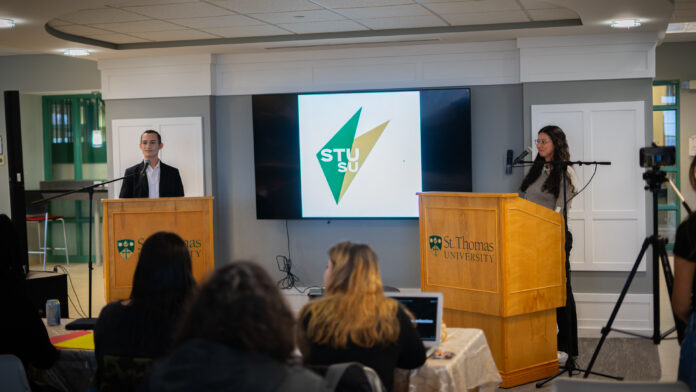

On Feb. 26, candidates for the St. Thomas University Student Union president and vice president of education roles asked and answered questions on student advocacy.
As part of the campaign trail, the debate took place in the Dawn Russell Lounge, the first in-person election event since COVID-19.
Related: STUSU restarted election results, voter turnout increased
While the results are already out, learn about the candidates’ main concerns for STUSU.
Communication and engagement
One change Ellie Namit, elected president of STUSU for the 2024-25 academic year, would like to see is better communication within STUSU and with students. They used the weekly STUSU meetings as an example, as Namit would like to see those meetings advertised and students attend and engage.
“I believe that one thing that is lacking somewhat is communicating directly with students and direction from the executives to the representatives,” they said.
Financial management
Namit thinks making sure students and other stakeholders know where the money is going and that is being put to good use is key.
They also mentioned the clubs and societies budget in regard to whether STUSU is spending too much or too little in different areas.
“Looking at the current budget the clubs and societies budget is around $4,500. A little over $600 of that has been spent and it is February … Seeing where the budget is maybe too low or too high … is really important.”
Elected vice president of education Ana Lucía Pavón also shared how she plans to help students.
Significant barriers for students
Pavón responded second with what she thinks are her top two barriers for students, engagement and lack of communication.
“There’s a barrier between STU students and the services provided. Student services, resources, clubs and societies are not reaching the STU community as a whole. I believe that is affecting our education,” said Pavón.
She said that communicating available services and events to students can increase engagement.
Access to quality education
Both candidates believed that financial pressure is an obstacle to accessing education.
Pavón added a way she thinks will help generate income for students to offset the cost of university.
“One of the things I would like to do is to increase jobs on campus for students to get an opportunity to be financially comfortable.”
